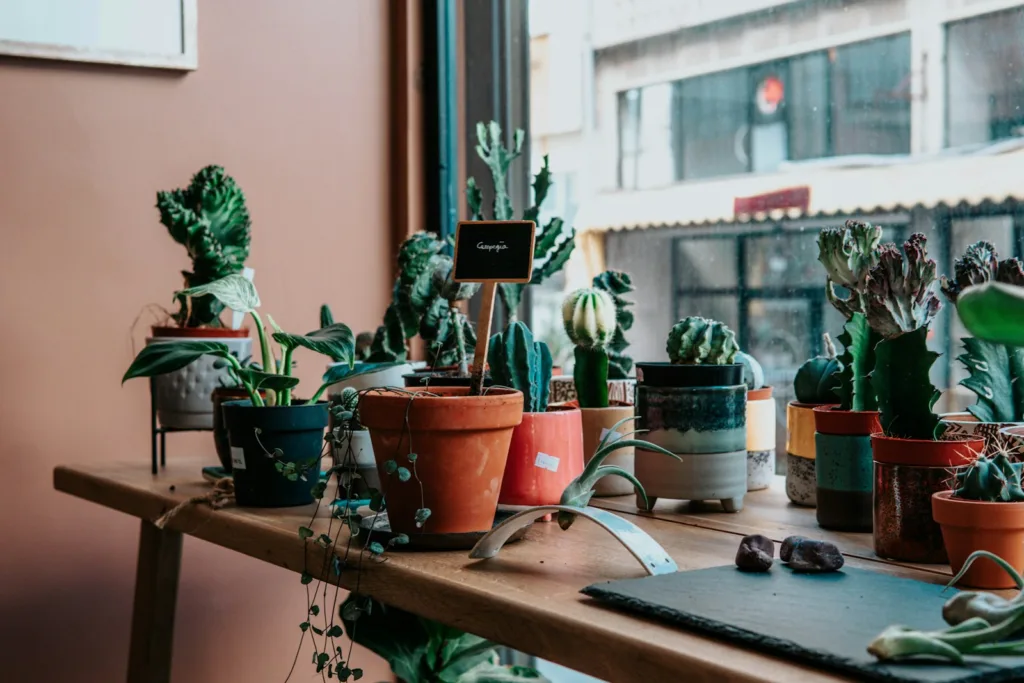When it comes to growing indoor plants, choosing the right pot is just as important as picking the right plant. I learned this the hard way! At first, I thought any cute pot from the store would do. But after a few months of yellow leaves, mushy roots, and sad-looking plants, I realized — the pot you pick makes a huge difference.
In this post, I’ll walk you through different types of pots for indoor plants, their pros and cons, specific plant examples, and a few personal lessons I’ve learned (so you don’t make the same mistakes I did!).
Top 5 pot types | pros&cons
Quick overview|Best Pots of indoor plant
| Pot Type | Best For | Pros | Cons |
|---|---|---|---|
| Clay/Terracotta | Succulents, Snake Plant, Aloe | Breathable, prevents overwatering | Dries out fast, heavy |
| Plastic Pots | Peace Lily, Ferns, Pothos | Retains moisture, lightweight, cheap | Poor airflow, risk of root rot |
| Ceramic (Glazed) | Fiddle Leaf Fig, Spider Plant | Stylish, retains some moisture | Heavy, often no drainage holes |
| Fabric Grow Bags | Herbs, Tomatoes, Rubber Plant | Great drainage, healthy roots | Leaks water, not very decorative |
| Metal Pots | ZZ Plant, Cactus, Rubber Plant | Durable, modern look | Can overheat, often no drainage |
1. Clay and Terracotta Pots
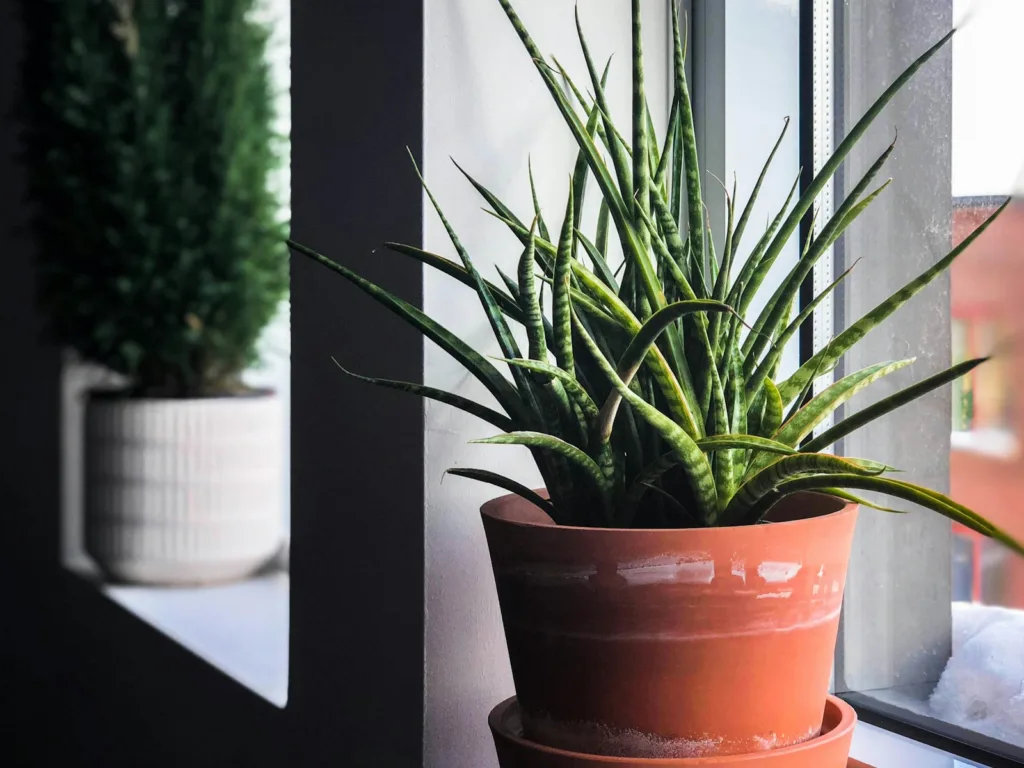
Description:
Clay and terracotta pots are made from natural, porous materials. They have a rustic, earthy look that goes with almost any decor style.
Benefits:
- They allow air and moisture to pass through the walls, helping the soil dry out faster.
- Great for plants that hate soggy roots.
Best Plants for Terracotta Pots:
- Succulents (like Echeveria, Haworthia)
- Snake Plant (Sansevieria)
- Aloe Vera
- Jade Plant (Crassula)
Why Use Them:
If you tend to overwater, or you’re growing drought-tolerant plants, terracotta is your best friend.
Why Not to Use Them:
They dry out fast. Plants that like consistently moist soil struggle in terracotta.
Real Talk:
I once stored my Peace Lily in a terracotta pot thinking it would look stylish. Big mistake! The soil dried up within days, and my poor plant looked like it was gasping for water. Lesson: Terracotta and thirsty plants don’t mix!
2. Plastic Pots
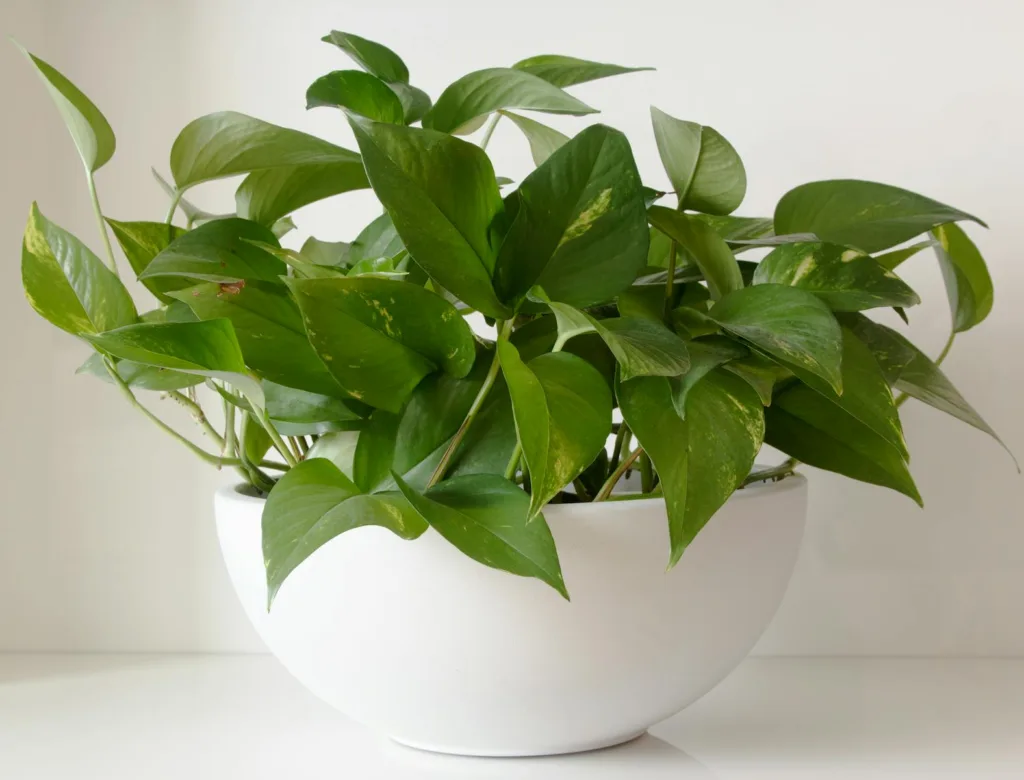
Description:
Plastic pots come in every color, size, and design you can imagine. They’re lightweight, durable, and inexpensive.
Benefits:
- Retain moisture longer.
- Lightweight and easy to move.
- Affordable.
Best Plants for Plastic Pots:
- Peace Lily
- Pothos
- Ferns
- Calathea
Why Use Them:
Ideal for beginners or anyone growing tropical, moisture-loving plants.
Why Not to Use Them:
Low breathability — can lead to root rot if you’re heavy-handed with watering.
Real Talk:
I used to keep my Monstera in a plastic pot inside a decorative cover without checking drainage. It turned into a mini swamp. Always, always, double-check if water can escape!
3. Ceramic Pots (Glazed)
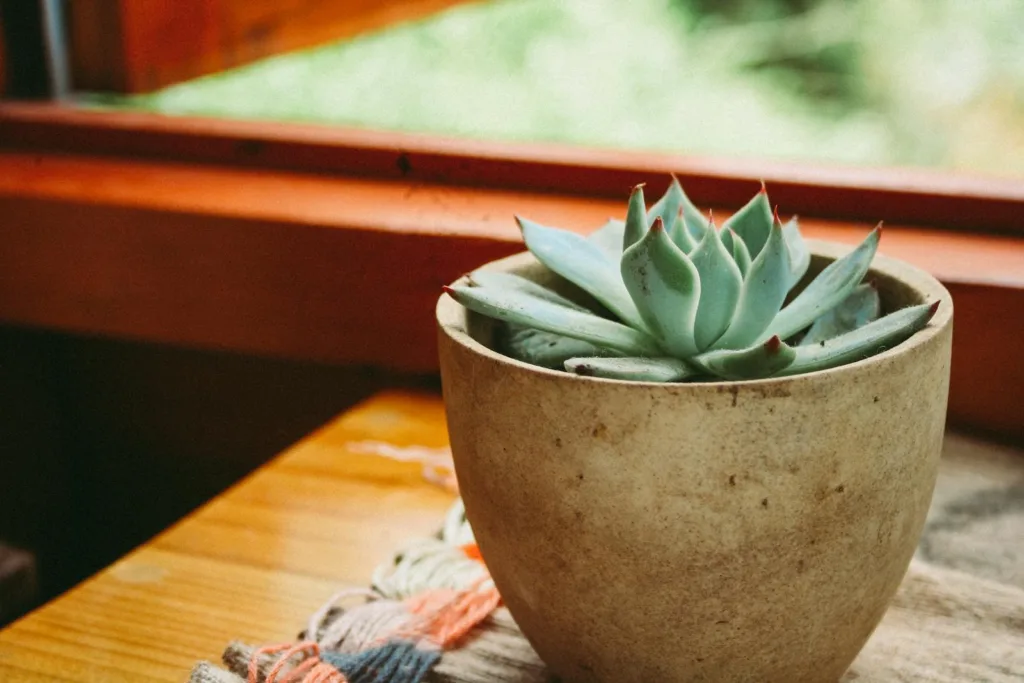
Description:
Glazed ceramic pots are sealed, often shiny, colorful, and heavy-duty. They’re more about beauty and design.
Benefits:
- Hold moisture better than terracotta.
- Look stylish and elegant.
Best Plants for Ceramic Pots:
- Fiddle Leaf Fig
- ZZ Plant
- Philodendron
- Spider Plant
Why Use Them:
Perfect when you want your plant to be a real statement piece in your decor.
Why Not to Use Them:
Heavy, and not all come with drainage holes. Also, they can crack if exposed to extreme temperature changes.
Real Talk:
I bought this beautiful blue glazed pot for my Spider Plant. I loved it… until it started dropping leaves.
No drainage hole = waterlogged roots = very sad plant. I learned to either drill a hole (carefully!) or add a thick layer of pebbles at the bottom if drainage isn’t an option.
4. Fabric Grow Bags
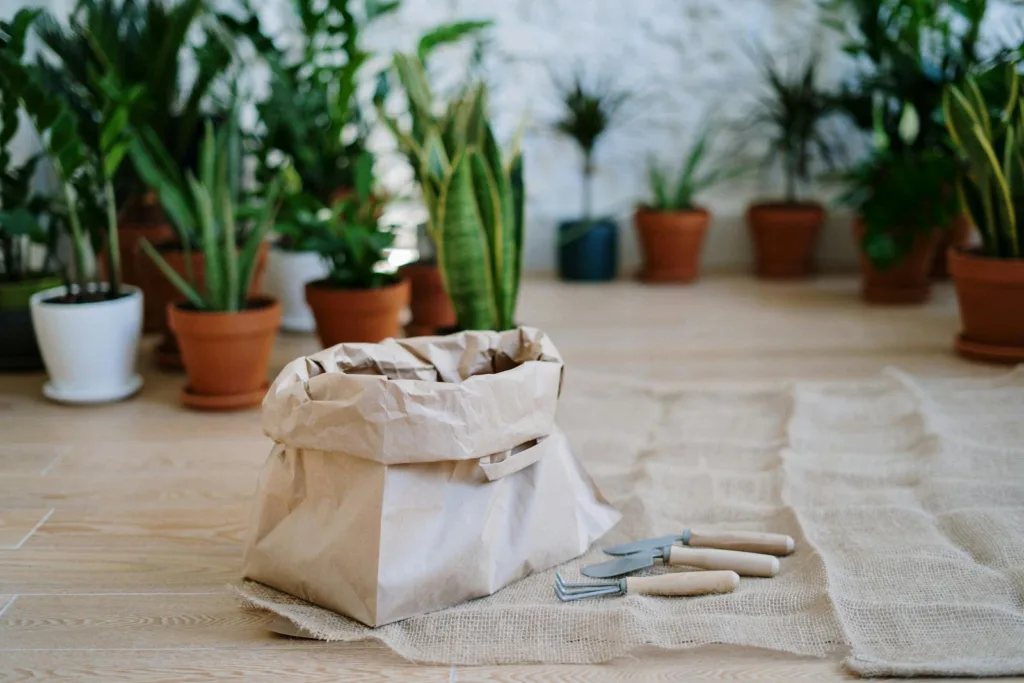
Description:
Breathable fabric containers, often used for urban or terrace gardening, but totally usable indoors with proper trays.
Benefits:
- Excellent airflow and drainage.
- Prevents plants from becoming root-bound.
Best Plants for Fabric Grow Bags:
- Herbs (like Basil, Mint)
- Tomatoes (for sunny spots indoors)
- Peace Lily
- Rubber Plant
Why Use Them:
If you’re serious about plant health and root development, fabric bags are excellent.
Why Not to Use Them:
They’re not exactly glamorous. Plus, they can leak water onto surfaces.
Real Talk:
I kept my basil in a small fabric grow bag. It flourished — no root rot, no droopy stems. But I had to keep it on a tray to catch extra water, or my windowsill would look like a mini flood zone after watering!
5. Metal Pots
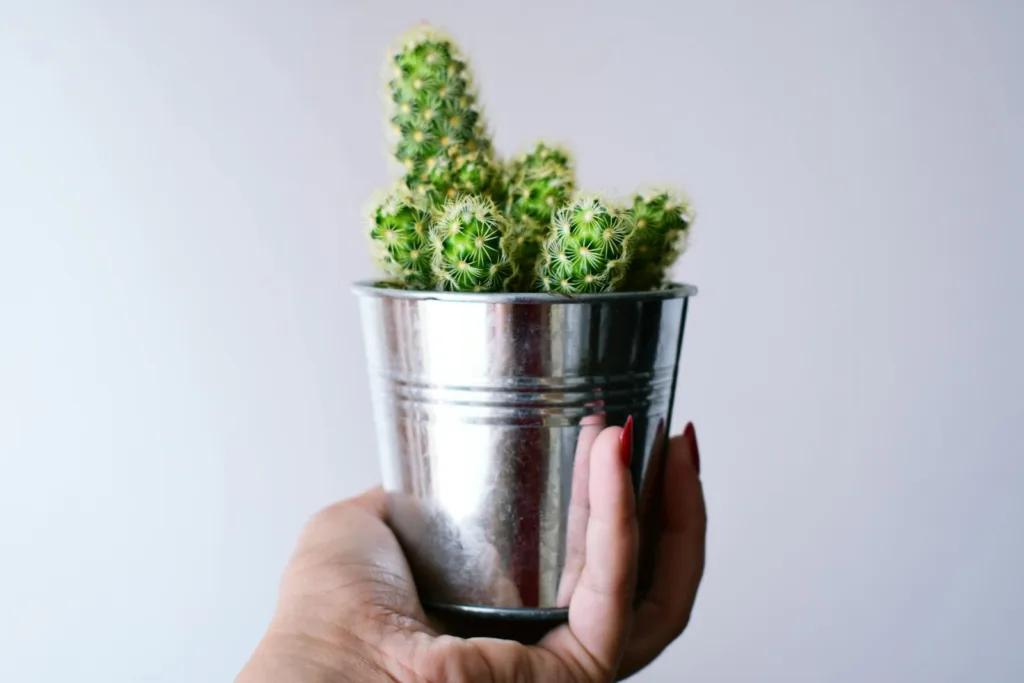
Description:
Metal pots, like brass, stainless steel, or even aluminum, are mostly used for decorative purposes.
Benefits:
- Sleek and stylish.
- Very durable.
Best Plants for Metal Pots:
- ZZ Plant
- Rubber Plant
- Sansevieria
- Cactus
Why Use Them:
Perfect for a clean, minimalistic, or industrial style indoors.
Why Not to Use Them:
Metal heats up fast and can damage roots if exposed to sunlight. Plus, many metal pots don’t have drainage.
Real Talk:
I had my ZZ plant in a brass pot on a sunny windowsill. It looked so good — until I noticed the roots were literally hot to the touch.
Now, I either line my metal pots inside with a plastic liner or keep them away from direct heat.
Final Tips for choosing right pot
- Always prioritize drainage. No matter how cute the pot is, if water can’t escape, your plant’s roots will eventually rot.
- Think about watering habits. If you’re forgetful about watering, go for moisture-retaining pots like plastic or glazed ceramic.
- Size matters. Pots that are too big can cause overwatering issues, while too-small pots can restrict root growth.
Final Thoughts
At the end of the day, the “perfect” pot doesn’t exist — but the perfect pot for your plant does.
Matching your pot to your plant’s needs (and your watering style!) is the real secret to thriving indoor greenery.
Some of my happiest plants aren’t in expensive designer pots. They’re in simple, breathable containers that allow them to thrive.
Pick smart, pot happy, and watch your indoor jungle grow!
FAQ
What type of pot is best for indoor plants?
The best pot for indoor plants depends on the plant’s needs. Terracotta pots are great for plants that prefer dry soil like succulents, while plastic or ceramic pots work better for moisture-loving plants like Peace Lilies and Ferns.
Do indoor plant pots need drainage holes?
Yes, drainage holes are highly recommended! They allow excess water to escape, preventing root rot and keeping your plants healthy. If your favorite pot doesn’t have a hole, you can double-pot or add a layer of pebbles at the bottom.
How do I choose the right pot size for my indoor plant?
Choose a pot that’s 1–2 inches larger in diameter than the plant’s current root ball. Too large, and you risk overwatering; too small, and the roots could become cramped, stunting growth.
